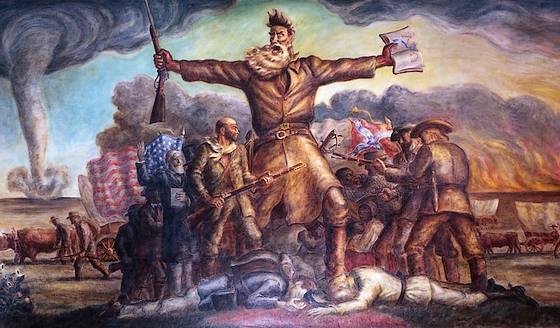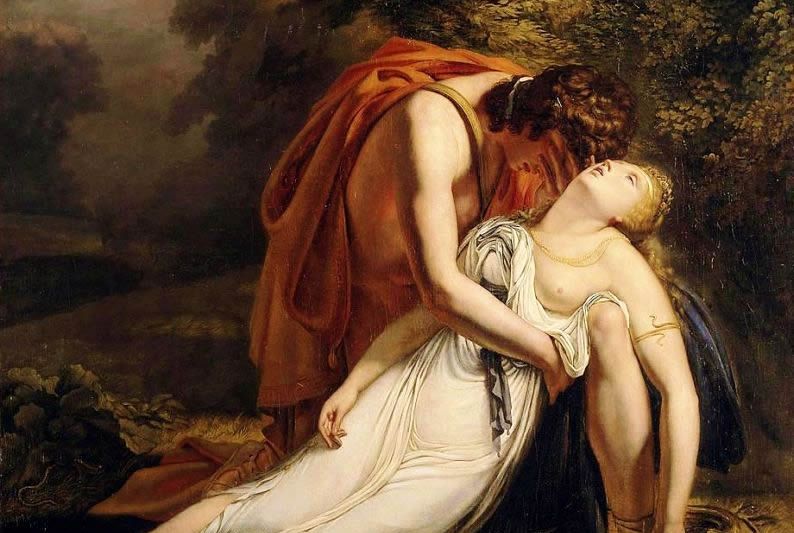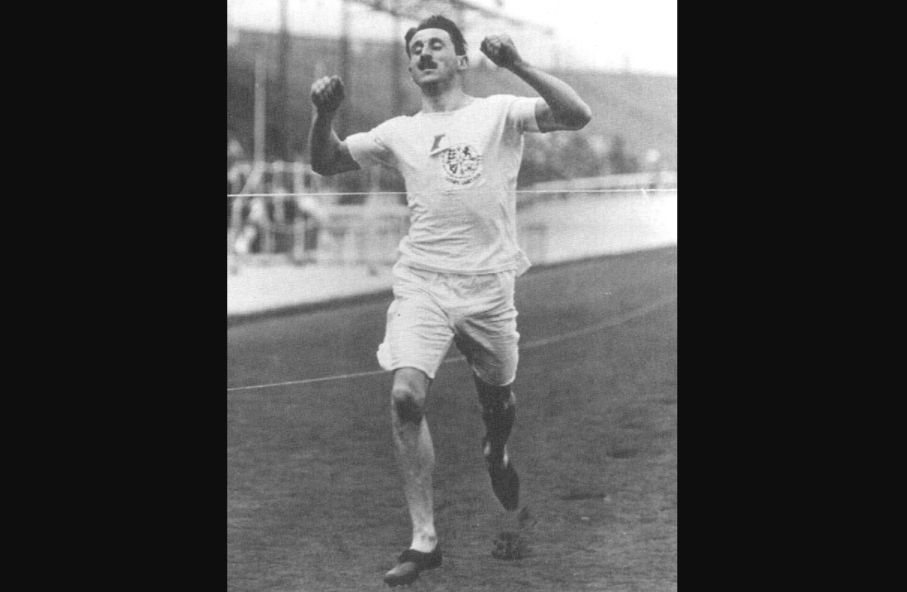The American abolitionist John Brown tried in vain to start a slave revolt in 1859. He was hanged in 1859.

John Brown fathered as many as twenty children. Seven of them are born from his first marriage, to Dianthe Lusk. After she died, Brown married his second wife, Mary Ann Day, in 1833. Thirteen children were born from this marriage.
Abolitionist
From a young age, Brown becomes a fierce opponent of slavery. He doesn’t like it when people are seen as merchandise.
In America in the nineteenth century, there was a lot of discussion about slavery and those discussions are getting fiercer. When the so-called Kansas-Nebraska Act is passed in 1854, the pioneers in the new territories in the west are given the right to decide for themselves whether slavery is allowed or not. The law was supposed to end a long discussion, but in practice the law introduced in the state of Kansas is causing an increasingly fierce battle between the proponents and opponents of slavery. There are so many riots that people quickly speak of Bleeding Kansas. The question is, should Kansas become a slave state or a free state?
John Brown also joins the fray. In 1855 he moved to Kansas. Brown has become convinced that violence must also be used to stop the pro-slavery fighters. In 1856, his group kills five of slaves. This so-called Pottawatomie Massacre was again related to a looting of a settlement by the so – called Free-Staters and so a lot of violence is used on both sides. The Pottawatomie Massacre is giving Brown a bad name all over the South. In the north, the abolitionist is increasingly seen as a hero.
His battle is not over yet. Brown wants to start a slave revolt and starts raising money for it. In the fall of 1859, he and a group of 21 warriors, including five of his sons, set up camp at Harpers Ferry, a town in slave-owning Virginia.

On October 16, 1859, Brown and his men attack the federal arsenal of Harpers Ferry. With the captured weapons, Brown plans to arm the southern slaves. The great slave revolt must begin in Virginia. The arsenal of weapons is only moderately defended and Brown soon manages to capture it. However, the abolitionist has taken into account that several slaves will come to support his group, but that turns out to be a misconception. Brown and his men are on their own and it proves difficult to defend the warehouse. Shortly after the capture of the depot, the men are surrounded by local militia and a Marine unit led by Robert E. Lee., later Supreme Commander of the Confederate Forces. Two of Brown’s sons are fatally injured and Brown himself is eventually arrested.
The abolitionist must answer to the judge and then invoke the Bible. Opinions about Brown differ in America but also in Europe. In the Americas, the abolitionist is seen by many as an insane extremist while many in the north revere him as a hero.
In Europe none other than the French writer Victor Hugo stands up for the abolitionist. The writer publishes a letter in the Daily News asking North Americans to pardon John Brown.
The End of John Brown

“This court acknowledges, as I suppose, the validity of the law of God. I see a book kissed here which I suppose to be the Bible, or at least the New Testament. That teaches me that all things whatsoever I would that men should do to me, I should do even so to them. It teaches me, further, to “remember them that are in bonds, as bound with them.” I endeavored to act up to that instruction. I say, I am yet too young to understand that God is any respecter of persons. I believe that to have interfered as I have done as I have always freely admitted I have done in behalf of His despised poor, was not wrong, but right. Now, if it is deemed necessary that I should forfeit my life for the furtherance of the ends of justice,and mingle my blood further with the blood of my children and with the blood of millions in this slave country whose rights are disregarded by wicked, cruel, and unjust enactments, I submit; so let it be done!”
John Brown was hanged a month later, on December 2, 1859. Many bells in the north are ringing as the execution takes place.
During the American Civil War (1861-1865) people in the north regularly sing the song John Brown’s Body:
The painting below by Thomas Hovenden, entitled The Last Moments of John Brown, shows Brown embracing a black child while on his way to the scaffold. In reality, there was no Negro present at the execution.


“I, John Brown, am now quite certain that the crimes of this guilty land will never be purged away but with blood. I had, as I now think, vainly flattered myself that without very much bloodshed it might be done.”
They would turn out to be prophetic words. The struggle between North and South, between free states and slave states, would culminate in a bloody civil war.







